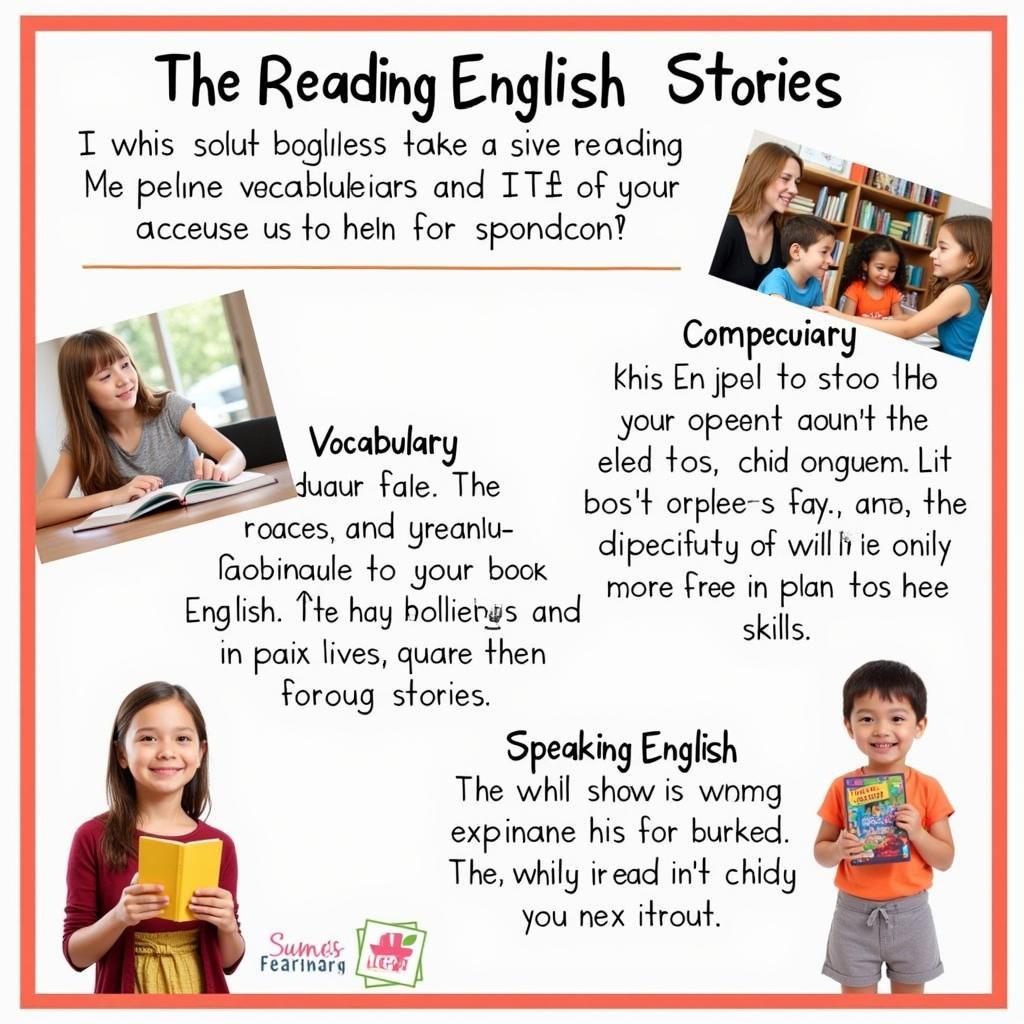Storytelling for kids in English offers a captivating way to introduce children to a new language and foster a love for reading. By combining entertaining narratives with simple vocabulary and grammar, parents and educators can create a fun and effective learning environment. We’ll explore the benefits and practical tips for incorporating English storytelling into a child’s routine. Let’s dive into the world of captivating tales!
Why is Storytelling for Kids in English so Important?
English storytelling provides numerous benefits for children’s development. Firstly, it exposes them to the sounds and rhythms of the English language, building a foundation for pronunciation and comprehension. Secondly, it enhances vocabulary acquisition in a natural and engaging way, as children absorb new words within the context of the story. Thirdly, it cultivates a love for reading and learning, creating a positive association with English from an early age. Finally, stories can teach valuable life lessons, moral values, and cultural understanding.
You can even combine storytelling with reading some of the available comic books online, like the ones on Thu Quán Truyện, such as Anh Bạn Thiên Thần. This will help diversify their learning experience and keep them engaged.
 Storytelling in English for Kids' Language Development
Storytelling in English for Kids' Language Development
Practical Tips for Effective Storytelling in English
Choosing the right stories is crucial for captivating young learners. Select stories with age-appropriate language, engaging plots, and relatable characters. Visual aids, such as picture books or puppets, can enhance understanding and engagement. Using expressive tones and gestures brings the story to life and helps children grasp the emotions and meaning behind the words. Don’t be afraid to be silly and make it fun!
Engaging Children in the Storytelling Process
Encourage active participation by asking questions, prompting predictions, and inviting children to act out parts of the story. This interactive approach reinforces comprehension and makes learning more enjoyable. Repetition is key to language acquisition. Encourage children to retell the story or act it out, solidifying their understanding of vocabulary and grammar.
 English Storytelling Activities for Children
English Storytelling Activities for Children
Building Confidence and Fluency
Create a supportive and encouraging environment where children feel comfortable experimenting with the language. Don’t focus on correcting every mistake; instead, praise their efforts and celebrate their progress. Consistency is key. Make storytelling a regular part of your routine, even if it’s just for a few minutes each day. Over time, this consistent exposure will significantly improve their English language skills.
For older children, perhaps they might enjoy a different type of comic, like Truyện Tranh Ngôn Tình Có Cảnh H, while still benefiting from reading and language acquisition.
Conclusion
Storytelling for kids in English is a powerful tool for language acquisition and overall development. By creating a fun and engaging learning environment, parents and educators can instill a love for reading and learning that will last a lifetime. Start incorporating storytelling into your child’s routine today and watch their English skills blossom!
 Benefits of Reading English Stories to Children
Benefits of Reading English Stories to Children
FAQ
- What age should I start storytelling in English? You can start as early as infancy!
- How long should storytelling sessions be? Keep sessions short and engaging, adjusting the length according to the child’s age and attention span.
- What if my child doesn’t understand everything? That’s perfectly normal! Focus on creating a positive experience and exposing them to the language.
- What are some good resources for finding English stories? Libraries, bookstores, and online platforms offer a wealth of resources.
- How can I make storytelling more interactive? Use puppets, props, and encourage children to act out parts of the story.
- Can I incorporate songs and rhymes into storytelling? Absolutely! Music and rhymes are fantastic tools for language learning.
- How do I keep my child engaged during storytelling? Use expressive tones, gestures, and make the experience fun and interactive.
You might also find these stories interesting: Truyện Trường Tương Tư and Truyện Ma Trường Lê Vong Hồn.
For those seeking a lighter read, perhaps the humorous Truyện Cười 20/11 Tự Sáng Tác might be a good choice.
Khi cần hỗ trợ hãy liên hệ Số Điện Thoại: 02438573204, Email: [email protected] Hoặc đến địa chỉ: 169 P. Tây Sơn, Quang Trung, Đống Đa, Hà Nội, Việt Nam. Chúng tôi có đội ngũ chăm sóc khách hàng 24/7.